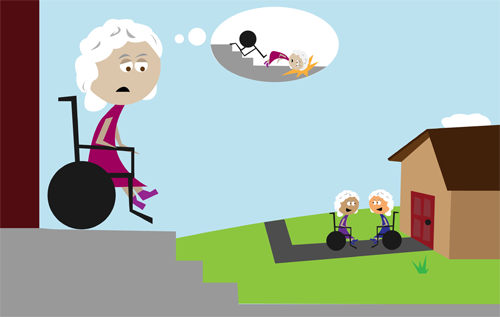
Finding a Home to Grow Old In
by Alex Berg and Josh Tapper
What older adults want, surveys repeatedly show, is to age in place and maintain their independence.
“Everyone wants to live in their own homes,” says Maribeth Bersani, of the Assisted Living Federation of America. “People want to be more in control.”
But most seniors will require some form of care as they age. Some innovative ideas for more adaptable senior housing:
College campuses
About 60 senior communities have sprouted on American campuses, including Stanford University and the University of Michigan. They’re essentially continuing-care retirement communities, offering independent and assisted living and nursing home services—plus access to university courses and activities, all in a dynamic multigenerational environment.
At the community called Vi at Palo Alto, near Stanford, which requires an entrance fee of more than $600,000, “very few people end up going to the nursing home or assisted living center,” says Regnier, a gerontologist and architect at the University of Southern California who has proposed such a community for retired USC faculty members. “Very frequently, they’ll stay in their own apartments and die there.”
Apartments for Life
Already prevalent throughout northern Europe, these mixed-age complexes offer private, condominium-style units with home care services available. Instead of sprawling suburban locations that characterize many U.S. facilities, these buildings are urban, promoting activity and independence with medical services close by.
Regnier believes such hybrid independent living, with integrated home care, will eventually become the norm.
Accessory Dwelling Units
Modular homes constructed on the same property as a family member’s house allow seniors to live independently, while receiving care from family members. When the occupants move or die, the unit can be removed.
“As we age, our greatest fear is to be isolated in the final stage of our life,” says Ken Dupin, inventor of the MEDcottage, manufactured in Virginia. The MEDcottage will cost between $1,500 and $2,000 per month and features a remote monitoring system to allow family members to keep an eye on its occupant from the main home.
The units may require local zoning changes. To date, however, only areas in Virginia have modified zoning to legalize them.
-

A Way to Ensure Retirement
Most Americans fail to prepare financially for retirement. One economist has proposed taking the choice out of saving.
-

A Doctor in the House
By reviving a practice from the past — house calls — the health care industry may be able to slash costs even as doctors give greater attention to older patients.
-

From Hospital Halls to Cyberspace
Telemedicine or e-care—technologies including remote patient-monitoring or videoconferencing—may prevent costly emergency room visits, hospital stays and nursing home use.
-

Rethinking Retirement
For millions of aging workers, the retirement age is sliding further away. Some will have to keep working; others will want to. Analysts ponder ways to make added work years viable and rewarding
-

Curing an Ailing Workforce
The health care industry needs millions of additional professionals with better geriatric skills to treat a surging older population. Two innovations are making headway.
THIS PACKAGE IN DEPTH
To read about how this story came together and the reporters involved
Click Here.
To see this story as part of a larger package published on Washingtonpost.com
Click Here.